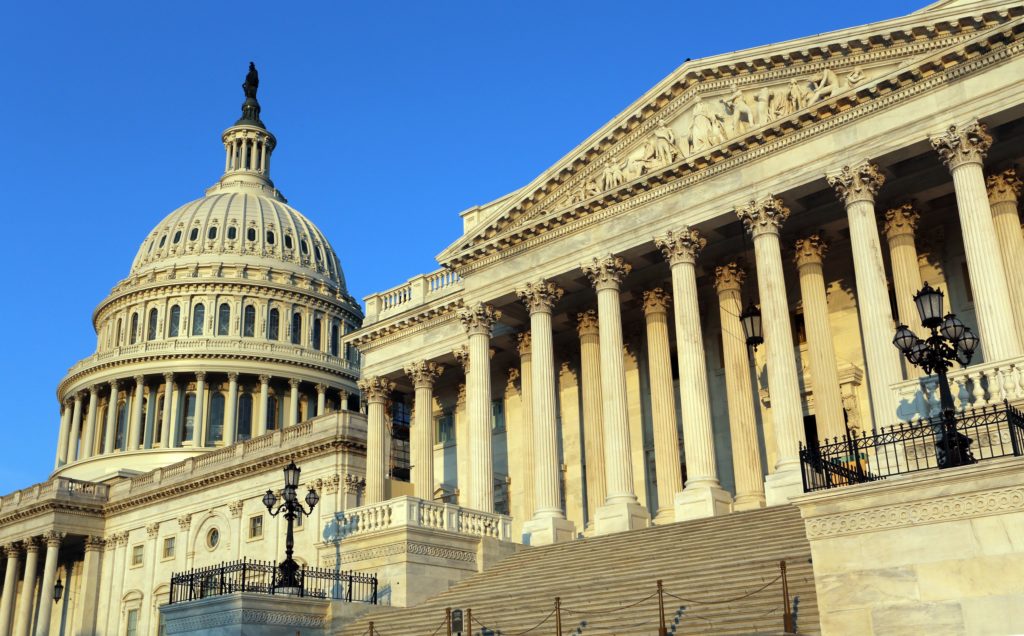
 For the past 2,500 years, the most influential military strategic guide has been “The Art of War,” attributed to Sun Tsu. Sun Tsu warned “To surrounded enemy, you must leave a path for escape.” Otherwise, with no visible dignified retreat or hope for survival, an adversary will fight to the finish instead of finding a mutually beneficial early truce. Business cannot watch in amusement as if the fight-to-the-finish government shutdown was an episode of World Wide Wrestling bellicose non-strategic gladiators.
For the past 2,500 years, the most influential military strategic guide has been “The Art of War,” attributed to Sun Tsu. Sun Tsu warned “To surrounded enemy, you must leave a path for escape.” Otherwise, with no visible dignified retreat or hope for survival, an adversary will fight to the finish instead of finding a mutually beneficial early truce. Business cannot watch in amusement as if the fight-to-the-finish government shutdown was an episode of World Wide Wrestling bellicose non-strategic gladiators.
As we approach the longest government shutdown in history, business leaders have become alarmed. This week we saw dueling wooden, hypnotically read, rehearsed and unconvincing prime time TV appeals to the nation by President Trump, House Speaker Nancy Pelosi, and Senate minority leader Chuck Schumer. As unsuccessful as were those blanketed broadcasts, things were even worse the next day when Trump stormed out of White House meeting with his opponents after 30 minutes—perhaps forgetting that the White House is his own residence. Hopefully he got back in and did not have to look in the windows from the bushes with former top staffer Omarosa.
While some offer reassurance that much of the US government is fully funded, the partial shutdown is corrosive to the US economy and our national brand image, while unjustly punishing almost a million innocent devoted government employees. Astoundingly, the highly-respected centrist veteran political columnist Michael Barone cavalierly suggested today the government shutdown may be no big deal: “Government shutdowns, formerly headline news, seem less painful these days (three-quarters of government is funded). Looks like stalemate.”
Apparently, Barone did not notice that last month closed off the worst year on US stock markets in a decade and the worst single month since the Great Depression. Today’s Wall Street Journal reported that the furloughed government workers in this shutdown will break the past 10 years of continued job growth, destroying what was the longest growth streak in over 80 years launched in the Obama administration. In fact, yesterday’s Wall Street Journal pointed out that the Securities Exchange Commission furloughed thousands of professional workers needed as part of the shutdown, currently the second-longest on record. The SEC has furloughed thousands of employees needed to review and approve corporate registration statements, including all proposed IPO filings. With SEC accountants and lawyers unable to work, the surge of all new IPOs for such major firms as ride hailing services Uber and Lift have ground to a halt.
The nation’s health and safety are put in jeopardy as food inspectors overseeing 80 percent of the nation’s food supply to detect contamination which kills thousands each year go without pay for over a month. TSA security screeners protecting us from terrorists call in sick. Farmers, grocers and other business have been devastated by the inability to access needed government services. Leading bank economists have reduced economic growth forecasts.
The tantrums and stare downs have been productive—but only for legal scholars! In a fresh New York Times column, Yale Law School’s Bruce Ackerman invoked historic lessons to suggest why Trump’s recourse to declare a national emergency will not be deemed constitutional while The Federalist responded with counter-legal analysis support Trump’s discretion. Surprisingly, even the normally pro-administration Fox & Friends has concluded that Trump’s prospective declaration of a national emergency would itself be a national disaster and an undermining of the balance of powers in government which could be abused by a Democrat president. The National Review and The Wall Street Journal warned that a presidential declaration of national emergency would strain the limits of executive power and launch a dangerous precedent justifying tyrannical presidential fiats on any compelling issues ranging from health care and abortions, to gun violence and climate change. Others add concern over the challenge of tunneling under a wall and the seizure of private property.
It is hard for the Democrats to explain continued resistance when the price tag has dropped from almost $40 billion for this wall last year to $4.7 billion this year. Democrats have previously backed existing insufficient fences, which needed reinforcement, without labeling their construction as fundamentally racist. It is equally hard for Trump to explain how his own government agencies report virtually no terrorists crossing the southern border illegally and the illegal drug interdiction Trump announced actually is captured completely at legal ports of entry.
In fact, the fear-mongering offered is refuted by statistics that show that natural born US citizens have far high crime rates, including violent crime, than immigrant or illegal alien populations. The pathetic argument that Mexico may yet be paying for it through the new NAFTA II or the USMCA deals is false, as they generate no government revenues and they have not even been ratified by any of the three nations. It is also confusing to all that a unanimous Senate vote, once supported by Trump, for government funding with no wall was rescinded after he chafed at criticism from a few hard right pundits.
A chillingly prophetic 1958 TV Western series called “Trackdown” featured a character named Walter Trump who claimed he would build a wall in order to protect a town from the end of the world, and it did not end well.
At our Yale CEO Summit last month, fully half the group voted that instead of a booming economy, a recession was likely in the next year. When asked to select between a dozen different economic and geopolitical factors that could destabilize financial markets, the CEOs overwhelming selected “US domestic political instability as the nation’s great threat” more than war, trade conflict, the Federal reserve, European instability, or Chinese, North Korean, or Russian mischief.
Harvard economist D. Quinn Mills warned in an interview for this piece “Our two political parties represent more than their political objectives and their members, they represent democracy to the world. They have a duty to democracy and this is at the core of their representation of the US as leader of the free world. The shutdown is making democracy look ineffective in face of an increasing challenge abroad from dictatorships. Our political leadership has a duty to end the shutdown now, regardless of who gains in American domestic politics.”
Yes, in a twist of Commodore Oliver Hazard Perry’s 1812 claim “We have met the enemy and they are ours,” cartoonist Walt Kelly’s star character a swamp possum named “Pogo” warned “We have met the enemy and it is us.”
The needed path for dignity must be provided by the oddly silent US business community that is passively watching this mutually assured destruction in horror. The Business Roundtable, The US Chamber of Commerce, the Committee on Economic Development, The National Association of Manufacturers, the Business Council and the like should stop writing bland white paper policy nostrums or lobbying for parochial targeted regulatory reforms. In fact, the market gains from last year’s hard fought tax reform have been resoundingly crushed by the recent market collapse. Business leaders must use their collective voices to explain to both parties that they are jeopardizing the health and safety of our nation more than does any of our external adversaries.
Related: Citizen Trump And The Boulevard Of Bedlam




0

1:00 - 5:00 pm
Over 70% of Executives Surveyed Agree: Many Strategic Planning Efforts Lack Systematic Approach Tips for Enhancing Your Strategic Planning Process
Executives expressed frustration with their current strategic planning process. Issues include:
Steve Rutan and Denise Harrison have put together an afternoon workshop that will provide the tools you need to address these concerns. They have worked with hundreds of executives to develop a systematic approach that will enable your team to make better decisions during strategic planning. Steve and Denise will walk you through exercises for prioritizing your lists and steps that will reset and reinvigorate your process. This will be a hands-on workshop that will enable you to think about your business as you use the tools that are being presented. If you are ready for a Strategic Planning tune-up, select this workshop in your registration form. The additional fee of $695 will be added to your total.

2:00 - 5:00 pm
Female leaders face the same issues all leaders do, but they often face additional challenges too. In this peer session, we will facilitate a discussion of best practices and how to overcome common barriers to help women leaders be more effective within and outside their organizations.
Limited space available.

10:30 - 5:00 pm
General’s Retreat at Hermitage Golf Course
Sponsored by UBS
General’s Retreat, built in 1986 with architect Gary Roger Baird, has been voted the “Best Golf Course in Nashville” and is a “must play” when visiting the Nashville, Tennessee area. With the beautiful setting along the Cumberland River, golfers of all capabilities will thoroughly enjoy the golf, scenery and hospitality.
The golf outing fee includes transportation to and from the hotel, greens/cart fees, use of practice facilities, and boxed lunch. The bus will leave the hotel at 10:30 am for a noon shotgun start and return to the hotel after the cocktail reception following the completion of the round.